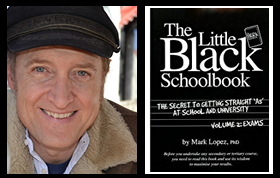Dr Mark’s The Meaning in a Nutshell
Andrew Stanton (director), Andrew Stanton and Jim Reardon (writers), WALL-E (2008)
The animated science-fiction film WALL-E (2008), directed by Andrew Stanton who co-wrote the screenplay with Jim Reardon, depicts what the filmmakers believe will be the horrible long-term consequences for humanity of maintaining a consumerist, materialistic and market-driven society where concern for the environment is low. The planet Earth will become so polluted it will be almost lifeless and virtually uninhabitable, with of immense piles garbage everywhere, as tall as buildings. Meanwhile, humans will have had to evacuate planet Earth to live in giant space ships. The film presents a warning to humanity to change its ways or else future generations will suffer the consequences.
The film features WALL-E, a small robot put on the Earth to manage the garbage. He will display qualities that are more human than the existing humans. With the planet almost lifeless, he finds a cockroach (since it is widely said that cockroaches can survive almost any calamity). WALL-E befriends the insect. Later, WALL-E will fall in love with another robot, EVE, which was sent to Earth to scour the surface for green shoots of life, evidence that the Earth may again be inhabitable and people can return.
Meanwhile, humanity seems to have been taken over by a huge corporation, Buy ‘N’ Large. Its logo is everywhere. It seems to run the space colony. The film is implying that corporate power, if left unchecked, will take over and assume totalitarian control over most, if not all, dimensions of life. The film suggests that Buy ‘N’ Large took control over the political and economic systems of the Earth and is largely to blame for polluting the planet.
Humans have lost their humanity. In the pursuit of comfort, they have become selfish, fat slobs. The Buy ‘N’ Large corporation has focused on making its customers so comfortable that they do not care about anything. They hardly connect or relate to each other. They lack energy, curiosity or passion. The consumerist and materialist mentality of seeking happiness through acquiring things has not made people happy. Instead, they appear emotionless. By contrast, it is the robots that are shown to be more human.
The robot WALL-E has feelings. He works hard all day at his job. He cares for other creatures, like insects. He falls in love. He is curious about the world around him. He contemplates the stars. He collects interesting objects that reveal the nature of the society that once inhabited the Earth. He cleans up the mess left by others. He appreciates that there is more to life than acquiring things. He values love and cares for the environment. He sets an example to the cinema audience on how they should live.
Student resources by Dr Mark Lopez
© Mark Lopez 2021 All RIGHTS RESERVED
The purpose of the concise notes of Dr Mark’s The Meaning in a Nutshell is to provide much needed help to students seeking to unlock the meaning of the texts with which they have to deal. (More elaborate notes are provided in lessons as part of my private tutoring business.)
Subject: WALL-E meaning, WALL-E themes, WALL-E analysis, WALL-E notes
